
Feral pigs are bad news for Australia!
Numbering in the millions these destructive and invasive feral pigs are creating devastation across the continent. These ecological zombies are acting as vectors for disease and are a serious environmental and agricultural pest.
Estimating up to 24 million in numbers, they now inhabit over 45% of the continent, costing agriculture over 100 million dollars on wild-life predation and lost crops.
They are destroying farmland and forest so keeping their numbers down is a serious business. They are the most destructive pests which were introduced by the Europeans and are growing bigger and brawnier than their British ancestors!
Find out more about their habits and what is being done as landowners battle to seek ways to reduce these negative effects.

1. What do feral pigs eat?

As opportunistic omnivores feral pigs will eat just about anything from grain to kangaroo to baby turtles.
They feed on plant and animal matter as well as being able of play the role of scavenger. They are largely random in their feeding habits and eat both invertebrate and vertebrate animals. When crops or succulent vegetation is available, then this is a large part of their diet plus a small amount of animal matter.

Using their long snouts which are flattened and strengthened on the end by a plate of cartilage, they can root as deep as 1m. They devour and destroy whole fields of crops by flattening and uprooting the soil. Farmers planting corn have discovered that the feral pigs go methodically down the rows during the night, taking out the seeds and eating them one by one.
Feral pigs claim any food left out for livestock and have been known to eat the livestock as well, including newborn lambs and calves.
2. Why does their eating cause a problem?

They will also eat underground plant material such as roots, bulbs and fungi. As well as directly affecting agriculture by feeding on crops they cause damage by uprooting and trampling the crops destroying pasture for livestock.

Physical to water supplies occur as feral pigs damaging water quality from rooting and wallowing. They loosen the soil making it vulnerable to erosion, the muddy silt eventually washes into the sea. In Queensland, this muddy silt smothers pristine reefs and kills coral. Their movements spread invasive weeds.
Feral pigs physically damage the environment which directly affects ecosystems. Feeding on native plants and animals is directly destructive and adds to the competition with native animals reliant on the same food resources. Feral pigs damage net fences which are used to confine livestock. They tear them up or lift them off the ground to gain access and leave holes that livestock especially sheep can pass through.
3. Where are they found?

Feral pigs adapt to almost any kind of habitat but prefer bushland, forests, and swamps. They are found in riverine areas which are the interface between land and river, and areas near agricultural fields. In Australia this includes rainforests, paper bark swamps, monsoon forest patches, floodplains, subalpine grasslands, and dry woodlands.

Feral pigs are widely distributed in Queensland, NSW, Northern Territory, and the ACT. Restricted populations also are found in Western Australia, Victoria, Kangaroo Island in South Australia, Flinders Island in Bass Strait.
4. How often do they breed?

In a good season with plenty of food and water, a sow can produce two litters a year. They average 5 and 6 pigs per litter and some up to10 pigs in each litter. Even though they can be sexually mature at 6 to 8 months old, young females do not generally have their first litter until they are over 13 months old. Where there are groups of dozens of wild pigs their numbers can increase to hundreds very quickly.

Weight depends on food availability and their genetic background. Males generally reach greater weights than females. An adult male can have a weight averaging 90kg and an adult female 80kg. Occasionally there are larger pigs found. Mortality rates vary greatly but they can live on average for no more than 5 years depending on levels of predation.
5. What industries are under threat?

A feral pig population can pose a great threat to the Australian farmer and the natural environment. The destructive way they eat crops, trample, and uproot land has negative impacts on animals and a range of native plants. They are a major problem in Australia for around 150 threatened species.
Australia’s banana industry is threatened with a devastating fungal disease that feral pigs are spreading. Known as the Panama disease the soil-borne fungi attacks the roots of the trees where the plant then eventually dies of dehydration. Once it is found there is no treatment and bananas cannot be planted there again. Farmers must grow another crop instead. Feral pigs can transfer disease to domestic herds. A foot and mouth outbreak could cost Australian’s billions of dollars.
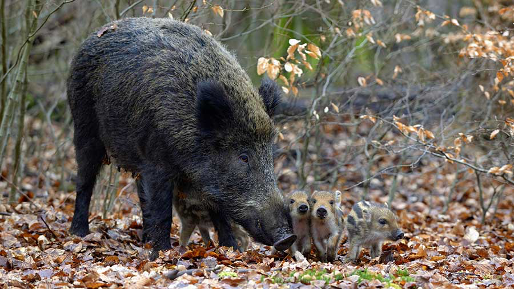
African Swine Fever is threatening Australia’s door by feral pigs being shipped from Australia’s north coast islands as a source of food. Papua New Guinea has confirmed cases and as the disease has already wiped out one third of the world’s Again African Swine Flu which could cost the Aussie port industry billions as well as having a lasting financial, social, and emotional devastation effect for producers and employers.
6. What diseases do they carry?
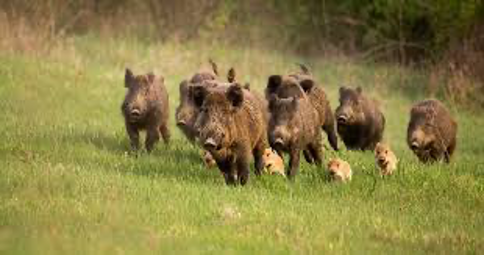
Feral pigs can carry pathogens and transmit diseases which affect livestock and man. These include tuberculosis, brucellosis, anthrax, leptospirosis, and tapeworm parasites. Other diseases and parasites include Q fever, fascioliasis, gastro-intestinal helminthiasis, sparganosis, hydatidurias, and acariasis.
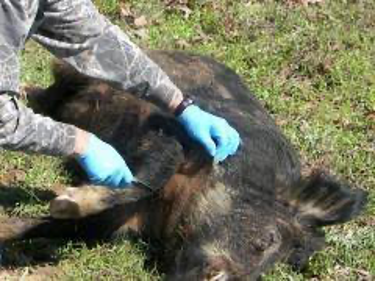
Feral pig hunting is the number one risk of catching brucellosis by farmers and others, who shoot, or trap feral pigs. To decrease the risk of infection, proper precautions including latex gloves and eyewear should be used when handling a hog.
The potential to harbour foot and mouth disease or African swine fever is a major risk factor for industry which could result in dramatic losses to the Australian livestock sector. Quarantine authorities are seeking ways to manage the risk that feral pigs bring should the diseases enter Australia.
7. What are the signs that there are feral pigs on the land?
- Rooting (diggings)
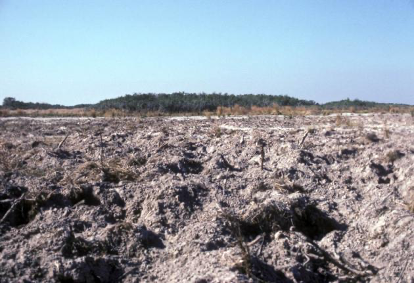
Their rooting is conspicuous and characteristic by them using their nose in search of underground food. Factors including the target food source, the moisture content of the soil, and age of the pig all lead to different intensities of rooting visibility. Small patches or large areas may be turned over to a depth of 20cm. Pigs may root along trails or furrows of a freshly planted germinating crop.
- Wallowing
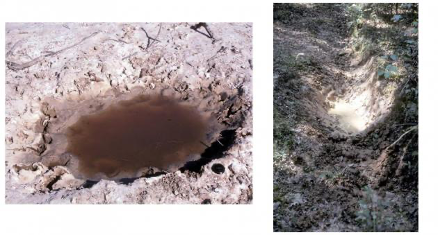
Feral hogs use wallows because of the need to cool themselves and get relief from biting insects and external parasites. Wallows are generally shallow, muddy depressions that are oblong to oval. Soil type determines the size of the wallow and the sides of a wallow are often smooth where the animal has rolled.
- Scats (droppings)
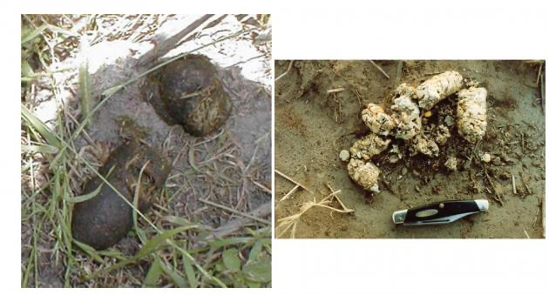
Scat or droppings can vary widely depending on diet and size of the pig. They are irregular in shape and feral pigs deposit them in small piles. The colour varies from tan to black depending on diet.
- Tracks
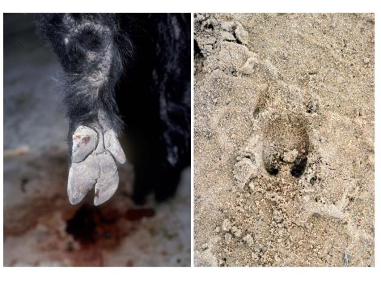
Feral pigs leave a cloven-hoofed print which tends to be round or circular in overall shape and as wide as they are long. Their tracks can be confused with those of sheep, goats, or cattle of the same size. Often the lateral toes of dewclaws are recognisable.
- Rubs
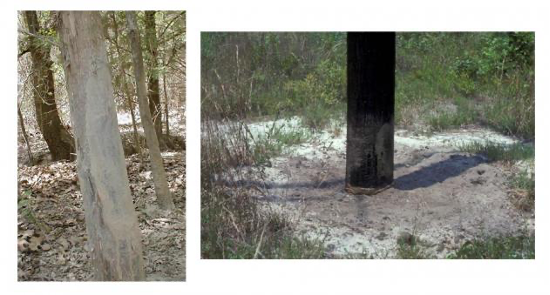
Rubs are where feral hogs scratch their bodies against trees, fence posts, rocks, or other stationary objects. These muddy, smoothly rubbed bands are typically found near trails that feral hogs use, especially those near wallows. They are generally between 5 and 40 inches above ground. Their bristles can be found in mud or caught in the rough surface of the structure being rubbed.
- Damage to fencing and crops
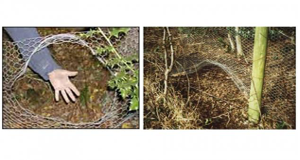
Wild pigs damage net wire fences which are mainly used to confine sheep and goats. They lift them up off the ground, tear them up or push through to gain access and leave gaps that the sheep and goats can escape through.
Direct foraging on agricultural crops causes them to be knocked down and trampled on as the feral pigs ravage the area.
8. How can they be controlled?
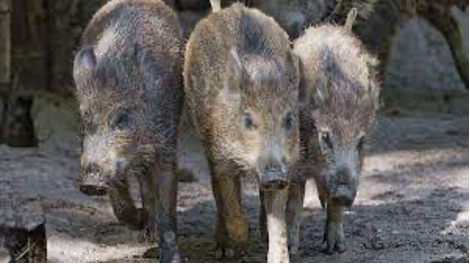
- Shooting
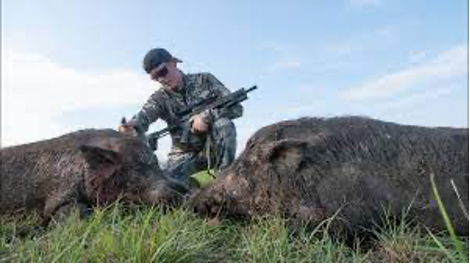
Farmers are urged to stay on top of feral pig numbers before they reach plague populations. Common control methods include shooting from helicopters in open country but where there is scrub, shooting from the ground. This can also be carried out by specialised hunters who use high powered rifles, hunting dogs and specially equipped trucks.
- Poisoning
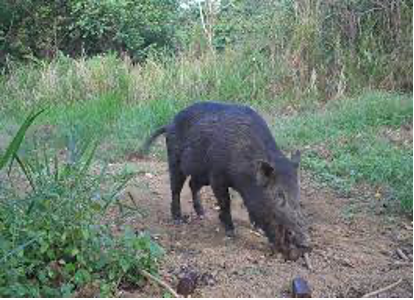
Large scale poisoning using 1080 can be effective to initially control pig numbers. Feral pig baits are prepared by mixing 1080 poison with grain or manufactured pellets. Manufactured bait products are also available. Grain, pellets, root vegetables, or apples are some of the many foods used to attract feral pigs in bait stations or traps.
- Trapping
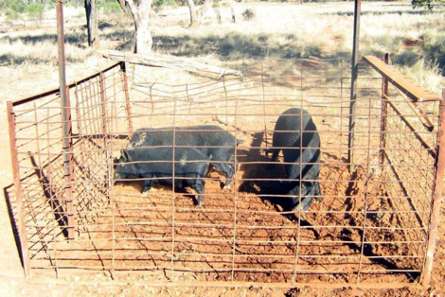
Trapping is flexible as most traps can be easily moved to where pig activity is current. Traps must be inspected daily so to reduce the risk to wildlife.
- Fencing
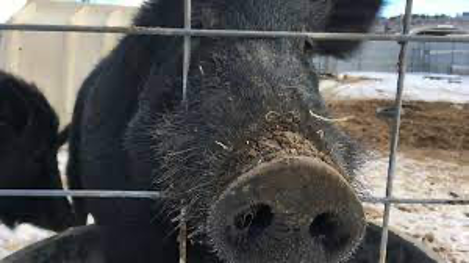
Effective pig-proof fencing can protect small areas. Constant maintenance is required to be effective.
9. How did they get to Australia?
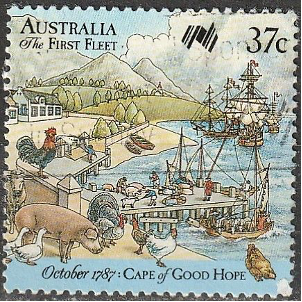
Domestic pigs were brought to Australia as a food source at the time of the European settlement.
After the First Fleet in 1788 they were initially concentrated near settlement areas then were transported around the country by 19th century settlers. The pigs that escaped established wild populations due to their adaptable behaviour and high reproductive rate.
With plentiful food, a balmy climate, and no natural predators, aside from the occasional ravaging crocodile and the piglet-poaching dingoes! – the pigs flourished.
These populations have since spread across 45% of the mainland with estimated numbers up to 24 million. that have grown bigger over time. They are Australia’s most widespread and damaging pest animal.
10. Can feral pigs attack humans?
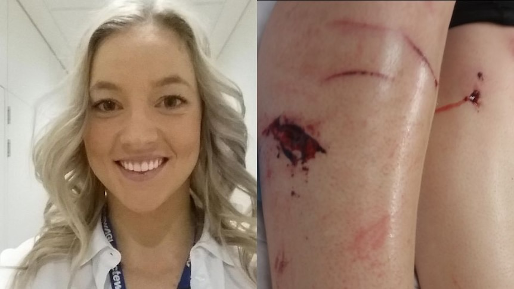
Attacks on people are rare. Given the opportunity most feral pigs would rather run away than confront a nearby human. The most frequent attacks to people are when the pigs are cornered, threatened, or wounded. In non-hunting situations the victim is mauled mainly on their legs or feet. Injuries are lacerations and punctures and can result in serious infections or blood poisoning.
A wounded boar is a dangerous situation as their dense bones and thick skin would be life threatening if they charged. Some of the larger ones can gore a human with their formidable tusks. Nothing less than a kill shot would be a deadly mistake.
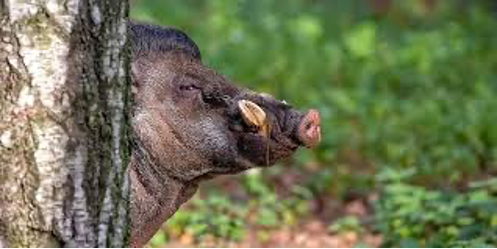
Most human victims are when adult males are travelling by themselves on foot or with a companion dog which may provoke an attack. Feral pigs also cause collisions on the road that can result in serious injuries for drivers and damage to vehicles.
Finally
Eradicating pigs from Australia would be very unlikely as they are too numerous and breed too quickly as well as being firmly established in some of the most remote and inaccessible terrain.
